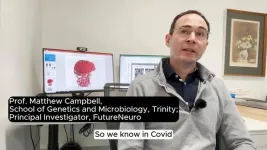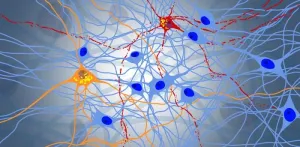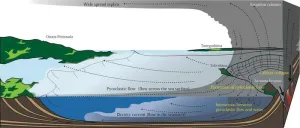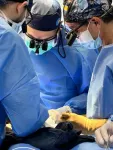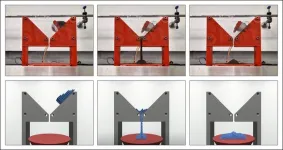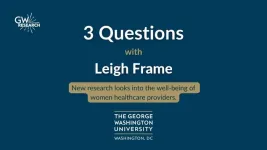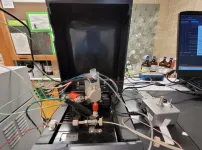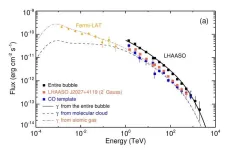(Press-News.org) Statement Highlights:
A new American Heart Association scientific statement updates more than a decade of research identifying, managing and preventing neurodevelopmental delays and disorders among people with congenital heart disease.
The new statement outlines important changes since the Association’s last statement in 2012, such as revised criteria to determine which children and adults are at high risk for neurological developmental delays and disorders, as well as an updated list of factors that may increase the risk.
Critical next steps include research on how to prevent and reduce the effects of common neurological developmental issues that may affect learning, emotions and behaviors throughout life.
Embargoed until 4 a.m. CT/5 a.m. ET Thursday, Feb. 22, 2024
DALLAS, Feb. 22, 2024 — More than a decade of new knowledge about neurodevelopmental risk in people with congenital heart disease has changed the thinking about who is most at risk and the factors that impact neurological development, learning, emotions and behaviors, according to a new American Heart Association scientific statement published today in the Association’s flagship, peer-reviewed journal Circulation.
Congenital heart disease, defined as structural abnormalities in the heart or nearby blood vessels that arise before birth, is the most common birth defect. While advances in treatment have helped more than 90% of people with congenital heart disease in developed countries live to adulthood, the risk of neurodevelopmental issues when individuals have a more severe form of congenital heart disease has not meaningfully improved.
The new scientific statement, “Neurodevelopmental Outcomes for Individuals With Congenital Heart Disease: Updates in Neuroprotection, Risk-Stratification, Evaluation, and Management,” describes the significant advancement in understanding the impact of congenital heart disease on an individual’s development, learning, emotions and behaviors throughout childhood and adulthood.
“Neurodevelopmental difficulties are among the most common and enduring complications faced by people with congenital heart disease. These difficulties can affect a person’s ability to function well at school, at work or with peers, and can affect health-related quality of life throughout childhood and into adulthood,” said Vice Chair of the writing statement group Erica Sood, Ph.D., a senior research scientist and pediatric psychologist at Nemours Children’s Health, Delaware Valley. “It is important for health care professionals and individuals with congenital heart disease and their families to understand how common neurodevelopmental difficulties are. It is also important to understand what places a person with congenital heart disease at high-risk for these difficulties, as well as how these difficulties can be prevented or managed.”
The statement includes updated guidance for health care professionals on how to identify which patients are at high-risk for neurodevelopmental difficulties and what type of evaluations may be helpful to better understand these difficulties. Optimizing neurodevelopmental outcomes through clinical care and research has become increasingly critical since more patients are surviving into adulthood.
The key findings of the statement include:
The algorithm for risk stratification of people with congenital heart disease into high or low risk for developmental delays or disorders has been revised to reflect the latest research.
The statement suggests health care professionals sequentially review three risk categories: Risk Category 1 includes patients with a history of cardiac surgery with cardiopulmonary bypass during infancy. Risk Category 2 is people with a history of chronic cyanosis, those with blue or purple discoloration due to low blood-oxygen levels, who did not undergo cardiac surgery with cardiopulmonary bypass during infancy. Risk Category 3 has two criteria. The first criterion for Risk Category 3 is a history of an intervention or hospitalization secondary to congenital heart disease in infancy, childhood or adolescence. The second criterion is the presence of one or more factors known to increase neurodevelopmental risk.
The statement features an updated list of factors known to increase neurodevelopmental risk, including genetic, fetal and perinatal impact, surgical aspects of treatment and care, socioeconomic and family influences and factors related to growth and development. For example, genetic variants that may alter fetal development of the heart, brain and other organs cause up to nearly a third of congenital heart disease cases.
There is a new section on emerging risk factors, such as abnormal placental development, prolonged or repeated anesthetic exposure and exposure to neurotoxic chemicals.
In addition, there is a new section on neuroprotective strategies, including detection of congenital heart disease before birth, monitoring of brain blood flow and the delivery of oxygen, and functional support care, such as physical therapy, occupational therapy and speech-language pathology.
The statement provides updated information about referral to age-based evaluation of people with congenital heart disease at high risk for developmental delay or disorder. The statement refers to guidance from the Cardiac Neurodevelopmental Outcome Collaborative, which recommends that children with congenital heart disease at high risk for developmental delay or disorders have neurodevelopmental assessments throughout infancy, childhood and adolescence.
The statement also provides updated information about management of developmental delay or disorder in infants, children and adolescents, and a new section on management of neuropsychological deficits in adults.
“Reducing barriers that people with congenital heart disease and their families often face when trying to access neurodevelopmental supports and services, and ensuring sufficient research funding are priority areas for future policies,” said Chair of the statement writing group Bradley S. Marino, M.D., M.P.P., M.S.C.E., M.B.A., FAHA, chief of cardiology and cardiovascular medicine at Cleveland Clinic Children’s. “More research will result in a better understanding of how to prevent and manage neurodevelopmental conditions related to congenital heart disease, which will ultimately improve neurodevelopmental outcomes and health-related quality of life for people with congenital heart disease across their life span.”
This scientific statement was prepared by the volunteer writing group on behalf of the American Heart Association’s Council on Lifelong Congenital Heart Disease and Heart Health in the Young, and the Council on Cardiovascular and Stroke Nursing. American Heart Association scientific statements promote greater awareness about cardiovascular diseases and stroke issues and help facilitate informed health care decisions. Scientific statements outline what is currently known about a topic and what areas need additional research. While scientific statements inform the development of guidelines, they do not make treatment recommendations. American Heart Association guidelines provide the Association’s official clinical practice recommendations.
Additional members of the writing group are Jane W. Newburger, M.D., M.P.H., FAHA; Julia S. Anixt, M.D.; Adam R. Cassidy, Ph.D., L.P.; Jamie L. Jackson, Ph.D.; Richard A. Jonas, M.D.; Amy J. Lisanti, Ph.D., R.N., FAHA; Keila N. Lopez, M.D., M.P.H.; and Shabnam Peyvandi, M.D., M.A.S., FAHA. Authors’ disclosures are listed in the manuscript.
The Association receives funding primarily from individuals. Foundations and corporations (including pharmaceutical, device manufacturers and other companies) also make donations and fund specific Association programs and events. The Association has strict policies to prevent these relationships from influencing the science content. Revenues from pharmaceutical and biotech companies, device manufacturers and health insurance providers, and the Association’s overall financial information are available here.
Additional Resources:
Available multimedia is on right column of release link https://newsroom.heart.org/news/latest-research-redefines-neurodevelopmental-risks-outcomes-for-congenital-heart-disease?preview=3657484c16e18bf1bac5feb29f5abf4c
After February 22, view the manuscript online here.
AHA news release: Identifying the cause of heart muscle disease in children is key to effective treatment (June 2023)
AHA health information: About Congenital Heart Defects
AHA health information: Commonly Asked Questions About Children and Heart Disease
Follow AHA/ASA news on Twitter @HeartNews
Follow news from Circulation @CircAHA
About the American Heart Association
The American Heart Association is a relentless force for a world of longer, healthier lives. We are dedicated to ensuring equitable health in all communities. Through collaboration with numerous organizations, and powered by millions of volunteers, we fund innovative research, advocate for the public’s health and share lifesaving resources. The Dallas-based organization has been a leading source of health information for a century. During 2024 – our Centennial year – we celebrate our rich 100-year history and accomplishments. As we forge ahead into our second century of bold discovery and impact, our vision is to advance health and hope for everyone, everywhere. Connect with us on heart.org, Facebook, X or by calling 1-800-AHA-USA1.
###
END
Latest research redefines neurodevelopmental risks, outcomes for congenital heart disease
New American Heart Association scientific statement offers the latest knowledge and guidance about the neurodevelopmental outcomes in people of all ages with congenital heart disease
2024-02-22
ELSE PRESS RELEASES FROM THIS DATE:
Researchers discover underlying cause of “brain fog” linked with Long COVID
2024-02-22
Today, a team of scientists from Trinity College Dublin and investigators from FutureNeuro announced a major discovery that has profound importance for our understanding of brain fog and cognitive decline seen in some patients with Long COVID.
In the months after the emergence of the novel coronavirus SARS-CoV2 in late 2019 a patient-reported syndrome termed Long-COVID began to come to the fore as an enduring manifestation of acute infection.
Long COVID has up to 200 reported symptoms to date, but in general patients report lingering symptoms such as fatigue, ...
Carbon emissions from the destruction of mangrove forests predicted to increase by 50,000% by the end of the century
2024-02-22
The annual rate of carbon emissions due to the degradation of carbon stocks in mangrove forests is predicted to rise by nearly 50,000% by the end of the century, according to a new study published in IOP Publishing’s journal Environmental Research Letters. Mangroves in regions such as southern India, southeastern China, Singapore and eastern Australia are particularly affected.
Mangrove forests store a large amount of carbon, particularly in their soils, however human development in these areas has led to the degradation of these carbon ...
Cracking the code of neurodegeneration: New model identifies potential therapeutic target
2024-02-22
Scientists at the University of Zurich have developed an innovative neural cell culture model, shedding light on the intricate mechanisms underlying neurodegeneration. Their research pinpointed a misbehaving protein as a promising therapeutic target in the treatment of amyotrophic lateral sclerosis (ALS) and frontotemporal dementia (FTD).
Neurodegenerative diseases cause some of the neurons in our brains to die, resulting in different symptoms depending on the brain region affected. In amyotrophic lateral sclerosis (ALS), neurons in the motor cortex and spinal ...
Former Dutch minister and renowned gastroenterologist joins NTU Singapore as Vice President of Research
2024-02-22
Nanyang Technological University, Singapore (NTU Singapore) has appointed Professor Ernst Kuipers, a renowned gastroenterologist, healthcare executive, and former Minister of Health, Welfare and Sport for The Netherlands, as NTU Singapore’s new Vice President (Research).
Prof Kuipers will also be appointed to the tenured faculty rank of Distinguished University Professor, the highest faculty rank at NTU bestowed upon faculty members with extraordinary scholarly achievements that typically span multiple disciplinary boundaries.
Announcing this new appointment, NTU President Prof Ho Teck Hua said: “We warmly welcome ...
Biggest Holocene volcano eruption found by seabed survey
2024-02-22
A detailed survey of the volcanic underwater deposits around the Kikai caldera in Japan clarified the deposition mechanisms as well as the event’s magnitude. As a result, the Kobe University research team found that the event 7,300 years ago was the largest volcanic eruption in the Holocene by far.
In addition to lava, volcanos eject large amounts of pumice, ashes and gases as a fast-moving flow, known as “pyroclastic flow,” and its sediments are a valuable data source on past eruptions. For volcanoes on land, geologists understand the sedimentation mechanism of pyroclastic flows well, but the sediments themselves get lost easily ...
Generative AI used to create translatable pediatric care educational videos for hospitals in resource-poor countries
2024-02-22
Mass General Brigham pediatric clinicians created 45 videos on pediatric care topics including how-to for surgical procedures, best practices for intubation and intensive care, and translated them to Spanish through GPT-4 large language model.
Videos distributed to clinicians in Guatemala and Colombia
AI can offer health care professionals worldwide an inclusive resource for elevating pediatric standards of care, according to authors
A team of pediatric clinicians at Mass General Brigham have turned to generative artificial intelligence (AI) to tackle problems plaguing child medical care delivery in resource-poor countries that increase risk for poor outcomes and mortality.
The ...
New realistic computer model will help robots collect Moon dust
2024-02-22
A new computer model mimics Moon dust so well that it could lead to smoother and safer Lunar robot teleoperations.
The tool, developed by researchers at the University of Bristol and based at the Bristol Robotics Laboratory, could be used to train astronauts ahead of Lunar missions.
Working with their industry partner, Thales Alenia Space in the UK, who has specific interest in creating working robotic systems for space applications, the team investigated a virtual version of regolith, another name for Moon dust.
Lunar regolith is ...
Women in healthcare face significantly higher burnout rates compared to their male colleagues
2024-02-22
WASHINGTON (Feb. 22, 2024)--A new study finds women in healthcare occupations endure significantly more stress and burnout compared to their male counterparts. The analysis by researchers at the George Washington University School of Medicine and Health Sciences also found that job satisfaction and better work-life balance can protect women healthcare professionals from harmful stress.
“Human beings are not equipped to handle the combined, intense pressures in healthcare in part due to the pressure to not take time to care for yourself,” Leigh A. Frame, associate director of the GW Resiliency & Well-being Center, ...
New technique can quickly detect fentanyl and other opioids
2024-02-22
University of Waterloo researchers have developed a new blood testing method that can detect potent opioids much faster than traditional approaches and potentially save lives.
The method, the latest effort by Waterloo researchers and entrepreneurs to lead health innovation in Canada, can simultaneously analyze 96 blood samples that could contain opioids such as fentanyl in under three minutes – twice as quickly as other techniques.
"The difference between our blood testing method and traditional methods used in laboratories and hospitals is that we can do it faster ...
LHAASO discovers giant ultra-high-energy gamma-ray bubble, identifying the first super PeVatron
2024-02-22
The Large High Altitude Air Shower Observatory (LHAASO) has discovered a giant ultra-high-energy gamma-ray bubble structure in the Cygnus star-forming region, which is the first time that the origin of cosmic rays with energy higher than 10 Peta-Electronvolt (PeV, 1PeV=1015eV) has been discovered. This achievement was published in the form of a cover article in Science Bulletin on Feb. 26. The research was completed by the LHAASO Collaboration led by Prof. CAO Zhen as the spokesperson from the Institute of High Energy Physics of the ...
LAST 30 PRESS RELEASES:
Scientists trace microplastics in fertilizer from fields to the beach
The Lancet Obstetrics, Gynecology, & Women’s Health: Taking paracetamol during pregnancy does not increase risk of autism, ADHD or intellectual disabilities, confirms new gold-standard evidence review
Taking paracetamol during pregnancy does not increase risk of autism, ADHD or intellectual disabilities
Harm reduction vending machines in New York State expand access to overdose treatment and drug test strips, UB studies confirm
University of Phoenix releases white paper on Credit for Prior Learning as a catalyst for internal mobility and retention
Canada losing track of salmon health as climate and industrial threats mount
Molecular sieve-confined Pt-FeOx catalysts achieve highly efficient reversible hydrogen cycle of methylcyclohexane-toluene
Investment in farm productivity tools key to reducing greenhouse gas
New review highlights electrochemical pathways to recover uranium from wastewater and seawater
Hidden pollutants in shale gas development raise environmental concerns, new review finds
Discarded cigarette butts transformed into high performance energy storage materials
Researchers highlight role of alternative RNA splicing in schizophrenia
NTU Singapore scientists find new way to disarm antibiotic-resistant bacteria and restore healing in chronic wounds
Research suggests nationwide racial bias in media reporting on gun violence
Revealing the cell’s nanocourier at work
Health impacts of nursing home staffing
Public views about opioid overdose and people with opioid use disorder
Age-related changes in sperm DNA may play a role in autism risk
Ambitious model fails to explain near-death experiences, experts say
Multifaceted effects of inward foreign direct investment on new venture creation
Exploring mutations that spontaneously switch on a key brain cell receptor
Two-step genome editing enables the creation of full-length humanized mouse models
Pusan National University researchers develop light-activated tissue adhesive patch for rapid, watertight neurosurgical sealing
Study finds so-called super agers tend to have at least two key genetic advantages
Brain stimulation device cleared for ADHD in the US is overall safe but ineffective
Scientists discover natural ‘brake’ that could stop harmful inflammation
Tougher solid electrolyte advances long-sought lithium metal batteries
Experts provide policy roadmap to reduce dementia risk
New 3D imaging system could address limitations of MRI, CT and ultrasound
First-in-human drug trial lowers high blood fats
[Press-News.org] Latest research redefines neurodevelopmental risks, outcomes for congenital heart diseaseNew American Heart Association scientific statement offers the latest knowledge and guidance about the neurodevelopmental outcomes in people of all ages with congenital heart disease
